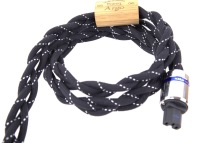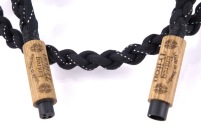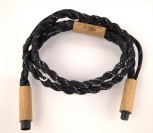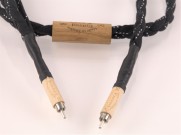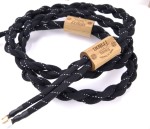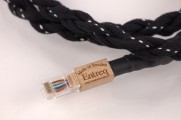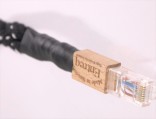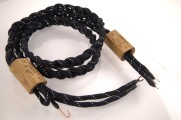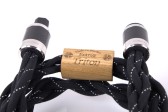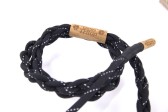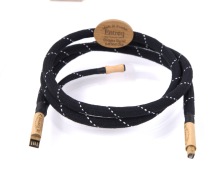Entreq Infinity Cables
Our cables are not only designed with precision and care, but they are also built to be unique in both construction and performance.
Each cable features separate conductors for positive and negative signals to optimize magnetic field handling, an asymmetrical design to reduce polarization effects, and a clockwise/anticlockwise cable spinning configuration to minimize cross-talk.
We use only the finest materials, such as pure copper and silver in the signal paths, wood in the contact framework for non-magnetic and non-conductive properties, and cotton covering for minimal interference.
In addition, our cables come equipped with DIC (Dedicated Integrated Contacts) and an EEDS (External Earth Drain System) for the straightest and clearest signal path possible.
Our EEDS technology also keeps pollutants and signals separated all the way from the source to the receiver, ensuring the purest signal possible.
But the unique performance of our cables is not complete without a clean and solid ground point.
That's why we offer a range of ground boxes to complement our cables, providing the cleanest and most stable ground possible. With our cables and ground boxes, you can unleash the true potential of your audio system, and experience the natural and transparent sound that Entreq is known for.
Common High End Cables
With a common Cable the screen is connected to both unit A and B. The shield surrounding the Cable will travel into both A and B.
This results in RFI/EMI floating around in the chassis of both A and B. The signal in the Cable is Clean and well protected, but once it hits unit B
the signal will be mixed with "dust" from the shield.

In a semi shielded Cable unit B are not connected to the shield wich will make RFI/EMI drain to unit A. Going against the positive signals direction.
Thus the signal will be mixed up with distorsions.

To avoid this problems we introduced the EEDS, Externa Earth Draining System, with our first Cable line Konstantin.
This drainwire system are not connected to Unit A, but instead starting right after the connector and then follow the positive conductor and signal.
Rigth Before Unit B the drainwire swap over to the negative conductor and follow the signal back to Unit A. Before reaching Unit A again it will leave the
cable and connect to a groundbox which eliminate the RFI/EMI. This while always following the signals direction and keep signal protected, but never mix signal with noice, either in unit A or B.
With this EEDS function we minimizes the use of metal and avoiding plastic materials, creating and easy flowing clean signal and outstanding performance.
Entreq EEDS Cable

Argo
Argo Power
Triton
Olympus Line. The best cables we ever made.
Once you experience the performance of an Olympus cable, there is no going back.
And the organic, analog sound of the Olympus USB cable, for example, sets it apart from other digital cables with their harsh digital edge.
If you have a good source, using the Olympus USB is like using the best XLR cable from an analog source. And the Olympus RG 45, combined with the Olympus DC Power, makes any streamer the king of the internet.
All Olympus cables are crafted with triple EEDS and carefully chosen materials, giving each cable its own unique soul and attitude.
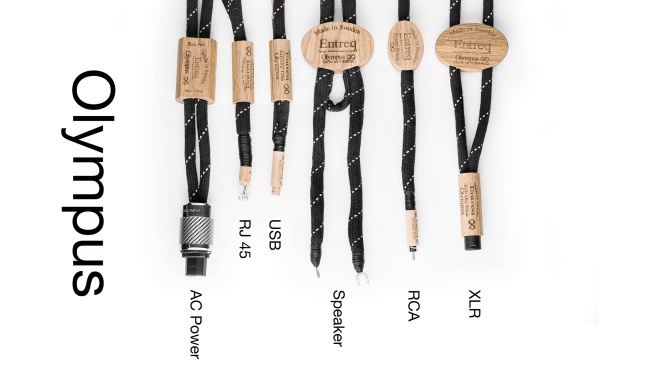
Olympus Eartha with bayonet.
Below, we've listed our older cable lines introduced between 2008 and 2010 that are still available upon request.
In 2013, we upgraded all our lines to SII. At that time, it was essential for us to ensure that customers could update their existing cables to SII.
When we introduced the Infinity line in 2017, we took care to ensure that all Discover, Konstantin, Challenger, and Apollo cables in use could also be upgraded to Infinity status.
Even though these cables may not be in stock, we still produce them upon request. Many satisfied users have complete cable setups and prefer to maintain the same cable quality when adding new units to their systems.

The Apollo line is one of our most popular and highly awarded cable lines. When you install an Apollo loom into your system, you give your system the best chance to perform at its highest potential. The Apollo line draws heavily from the Konstantin line but also includes many new solutions and advancements unique to Apollo and Olympus. With the Apollo line, you can expect exceptional performance and unparalleled sound quality.
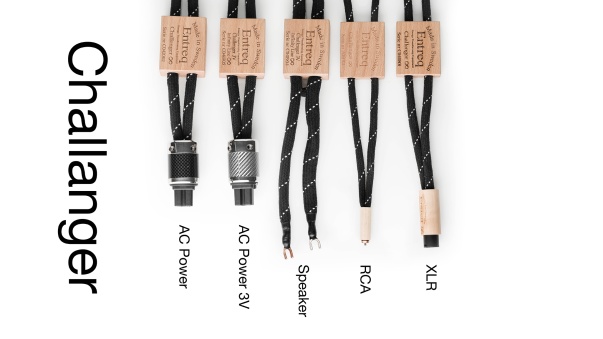
The Challenger Line represents a significant upgrade from the Konstantin line, incorporating advanced parameters and details that were not feasible to include in the Konstantin line due to cost constraints.
The Challenger line represents a significant step up in performance, with many users considering the Challenger 3 V to be one of the best power cords on the market.
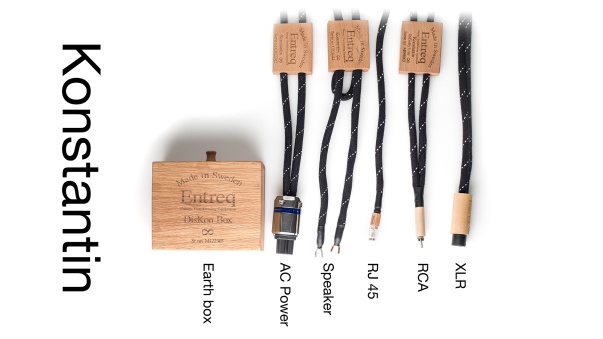
The Konstantin line, introduced in 2008, serves as the foundation for all of our cables. Over the years, we have continually improved the line by incorporating Infinity technology, new dielectrics, new connectors, and dedicated ground boxes. As a result, the Konstantin line is now one of the most advanced and modern cable lines available today.
When you purchase a Konstantin cable, it comes with a ground box and an Eartha cable to ensure optimal performance.
Many users consider the Konstantin line to be their favorite due to its open sound, easy flow, quiet background, and excellent price-to-performance ratio.
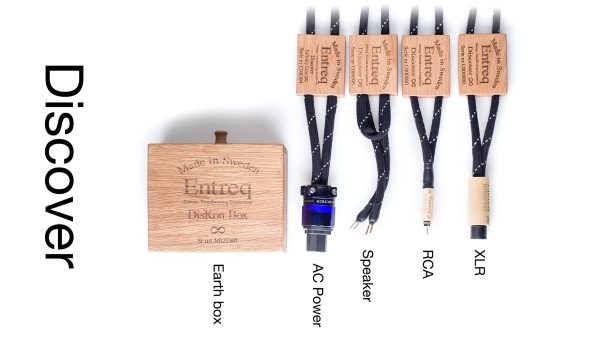
The Discover line is a refined and more economical version of our acclaimed Konstantin line, featuring slightly narrower conductors and smaller EEDS. Despite its lower price point, the Discover line meets the high standards of performance and quality that you can expect from all Entreq products. With its open, natural sound signature, the Discover line offers a truly pleasurable listening experience. And like our Primer line, the Discover line is designed for easy plug-and-play setup, so you can start enjoying your music without any fuss.
1.Separate cable for positive and negative signals to handle the magnetic fields in the best way possible.
2.Asymmetrical design to optimize the polarization effect and minimize the impact on the signal from the magnetic fields.
3.Positive and negative cables are spun clockwise and anticlockwise respectively to reduce cross talking between the cables and fields.
4.Adapted lengths to minimize the antenna effect.
5.DIC (Dedicated Integrated Contacts) to keep the signal path as straight and clear as possible.
6.Wood in the contact framework for non-magnetic and non-conductive properties.
7.Only pure copper or/and silver in the signal paths, no alloys or metal just for good looks.
8.Drain wire instead of shielding to connect to a pure earth point (External Earth Drain System).
9.EEDS (External Earth Drain System) to keep pollutions and signal separated all the way, from source to receiver.
10.Cotton covering instead of synthetic materials to add as little features as possible.















